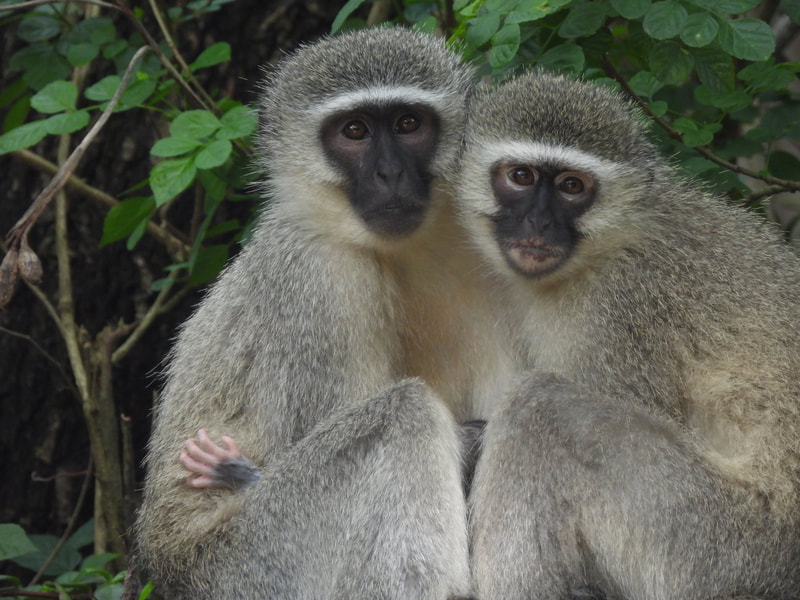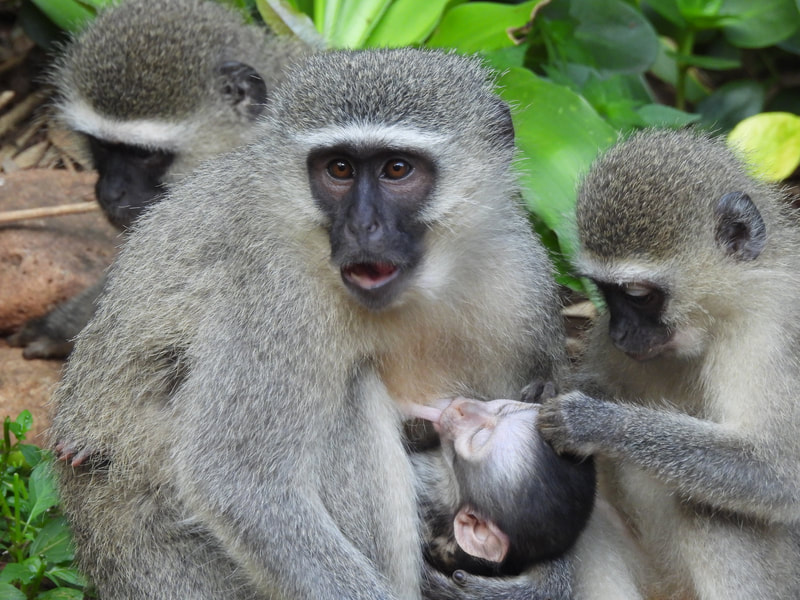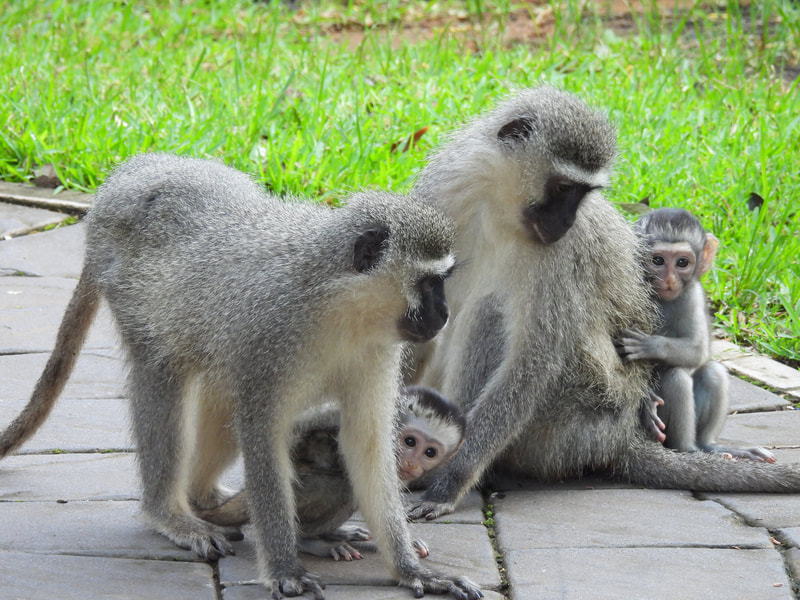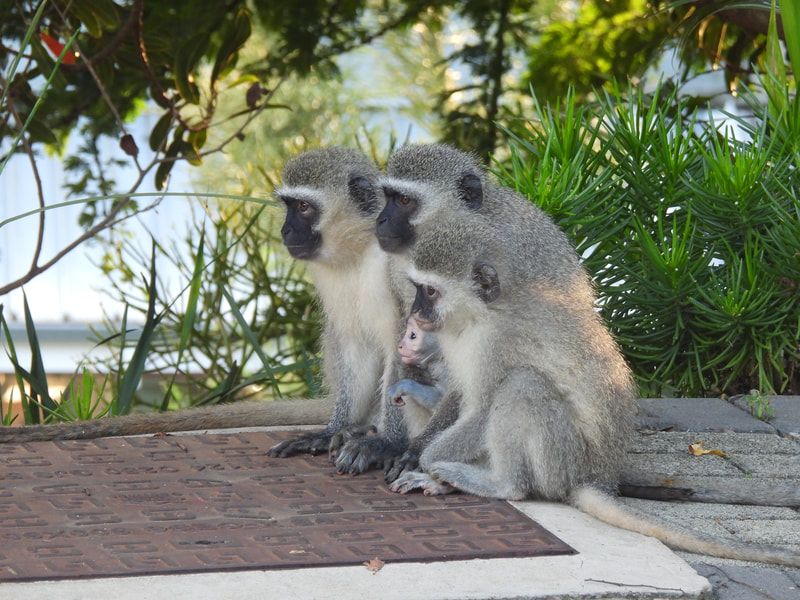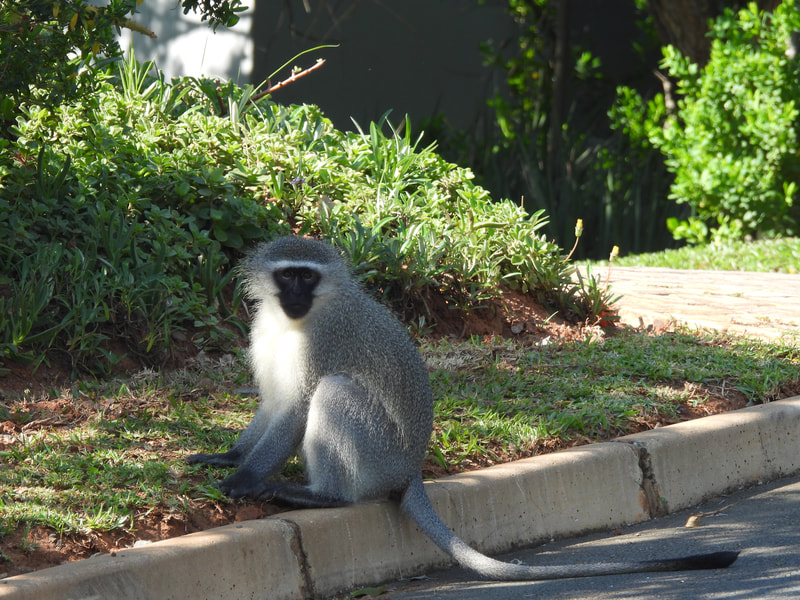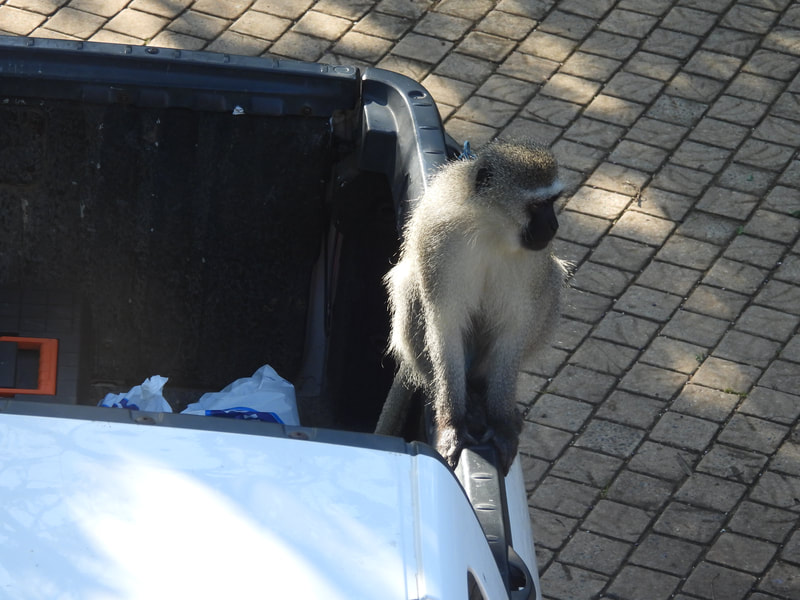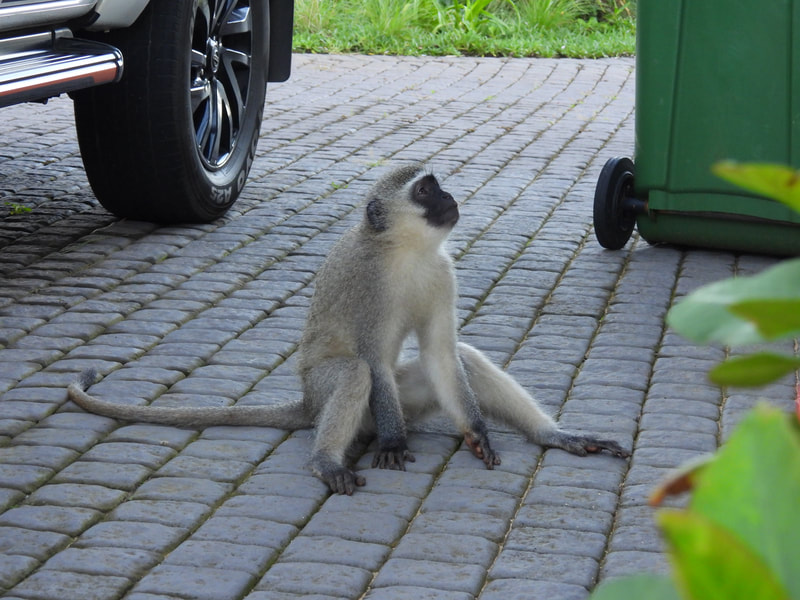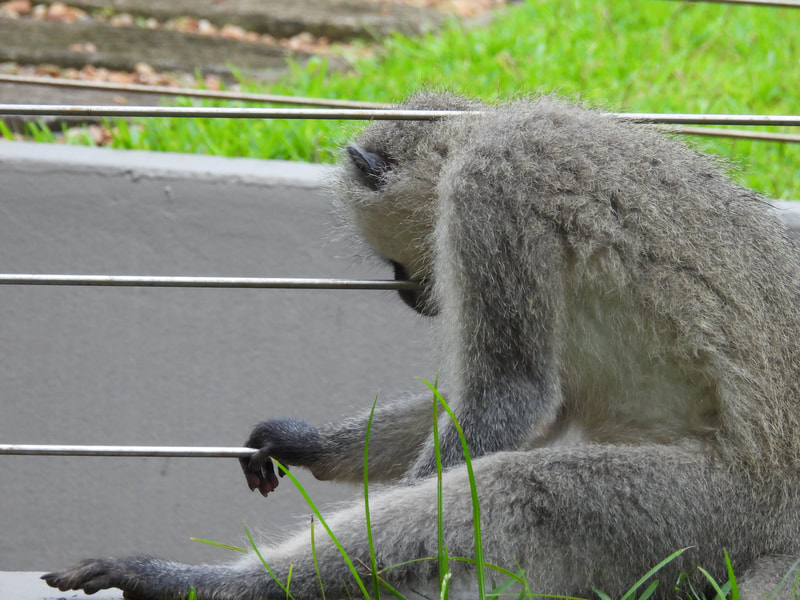© Lindsey Ellington
Vervet monkeys (Chlorocebus pygerythrus) are a species of Old-World monkey found throughout sub-Saharan Africa. They are one of the most prolific monkey species in Africa with baboons, having adapted to a diverse range of habitats, to the point of becoming a familiar inhabitant alongside humans, raising the urgency of attention to human-wildlife conflicts. They are semi-arboreal, spending a significant portion of their day on the ground (Cheney & Seyfarth, 1990). Troops occupy home ranges and move around these ranges throughout the day to forage (Isbell et al, 1990). They are multi-males & multi-females, with males dispersing at sexual maturity whilst females remain in their natal troops throughout their lives (Cheney & Seyfarth, 1983). Females first reproduce at around four years of age, and at most sites exhibit yearly reproduction cycles (one baby per female per year), with the birth season lasting roughly from September to December in South Africa. Vervet monkeys are opportunistic and omnivores, eating a variety of plant species and parts, as well as invertebrates and some vertebrate preys (Struhsaker, 1967; Whitten, 1988).
Monkeys at UVP
Simbithi is home to multiple troops of vervet monkeys, and we currently follow 2 habituated ones: Acacia & Savanna and are busy habituating a third one: Pink. They are monitored on a daily basis and detailed data is being collected on their demography, life history, and ranging behaviours. Through detailed focal follows, we are increasingly capturing details on the monkeys’ foraging behaviours, social relationships, vocalisations, and many more interesting activities! The troops have overlapping territories primarily located along the Acacia drive & Ladlau drive. There are at least 4 other known troops previously studied mainly by Lindsey Patterson & Harriet Thatcher (Ballito, Heron, Goodies, Farmyard) and 3 suspected ones (Ironwood, Long Island & Beverley). Some of them sometimes interact with our troops but not all of them are habituated to be followed by human researchers. In our habituated troops, all vervet monkeys are individually identified thanks to the description files (here below) and this allows us to monitor the composition of the group on a daily basis, and all social interactions between the individuals.
|
Acacia - N=22
|
Savanna - N=19
|
|
Pink ~ N=35
|
© Stephanie Mercier & Lindsey Ellington


